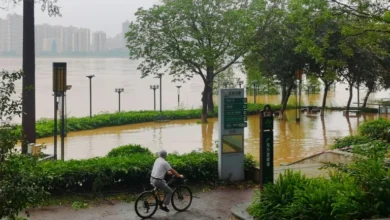Japan: Beginning of the Second Round of Fukushima Nuclear Waste Release
On Thursday, the operator of the Fukushima nuclear plant said that Japan has started discharging a second batch of the facility’s treated effluent. As reported by AFP, the water leak started around 10:18 am (0118 GMT). This release comes after the first one on August 24, when Japan started discharging part of the 1.34 million tonnes of wastewater that had accumulated since a tsunami damaged the plant in 2011.
The UN’s nuclear inspector supports Japan’s claim that the treated water presents no health hazards, but China has frequently criticized the discharge and banned all imports of Japanese seafood. The second phase is anticipated to release around 7,800 tonnes of water, similar to the original release that finished on September 11.
According to TEPCO, all radioactive elements have been removed from the wastewater with the exception of tritium, which is present at acceptable levels. Hirokazu Matsuno, a government official, told reporters on Thursday that “it has been confirmed that the first release has been conducted as planned and in a safe manner,” emphasizing that no anomalies had been found.
In a “highly transparent manner,” the government would “continue to communicate, both domestically and internationally, results of monitoring data,” Matsuno added. Japan would also request that China “immediately scrap import bans on Japanese food, and act based on scientific justifications”, the official said.
According to reports, Russia, which has tense ties with Japan, is thinking of imitating the seafood embargo. Prime Minister Manasseh Sogavare of the Solomon Islands, who has cultivated strong connections with Beijing, reiterated China’s accusation that Japan uses the ocean as a “sewer” at the UN last week.
Tokyo urged Beijing to “ensure the safety of Japanese residents in China” after multiple Japanese firms reported being inundated with calls from Chinese numbers after the original publication. The entire discharge, which will take decades to complete, is intended to clear the way for the plant’s damaged reactors’ extremely hazardous radioactive fuel and debris to finally be removed.







